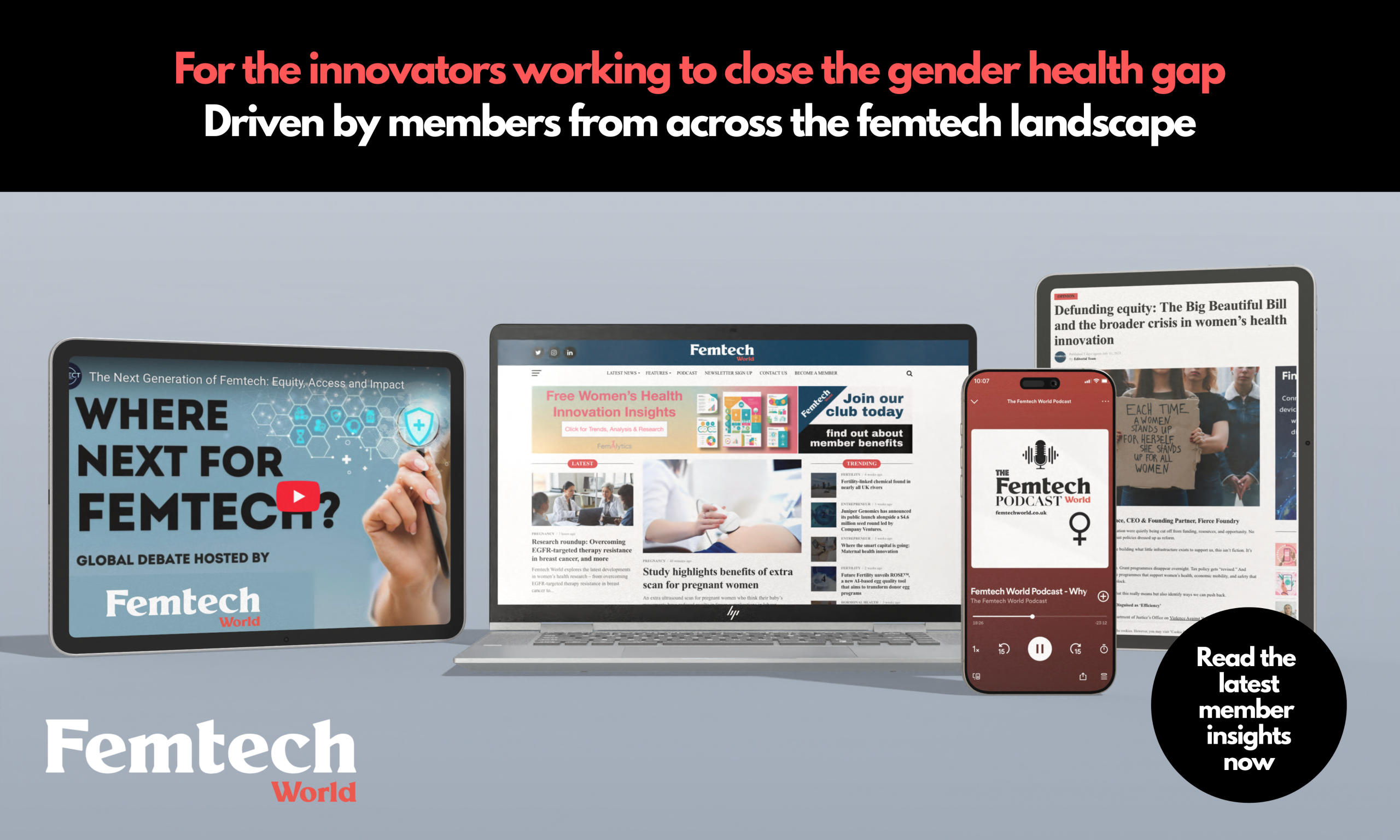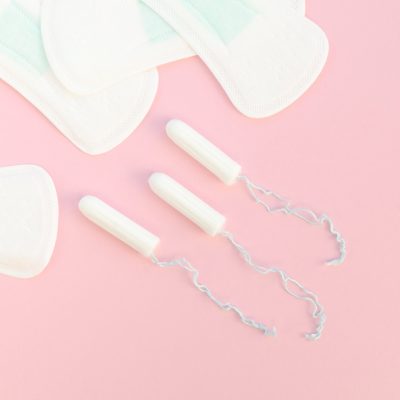To receive the Femtech World newsletter, sign up here.
News
Could ovarian tissue freezing delay menopause? Here’s what research shows
Scientists at Yale School of Medicine published research on possible outcomes when menopause is delayed via ovarian tissue freezing

A new paradigm around the biological processes of menopause is capturing the attention of scientists in the US.
A small group of researchers in the US are analysing the possibility of delaying menopause in healthy women, allowing them to extend their child-bearing years, and perhaps even forestall some of the health risks and uncomfortable symptoms.
This, however, could be controversial. While some people may believe that such research could lead to life-changing benefits for women, others may think the menopause should not be “pathologised” by medical science.
At Yale School of Medicine, Kutluk Oktay, an ovarian biologist who is director of the Laboratory of Molecular Reproduction and Fertility Preservation, recently added a new chapter to this conversation by publishing research on various possible outcomes when menopause is delayed in healthy women via ovarian tissue freezing.
Oktay, who developed and performed the world’s first ovarian transplant procedure with cryopreserved tissue for a patient with a medical indication in 1999, sees a future in which healthy women could use this process of freezing tens of thousands of eggs within the ovarian tissue to stave off menopause for as long as several decades — or even prevent its onset altogether.
“For the first time in medical history, we have the ability to potentially delay or eliminate menopause,” he said.
A mathematical model to predict outcomes for delayed menopause
Using data from hundreds of previous ovarian cryopreservation and transplantation procedures and molecular studies of how ovarian follicles behave in ovarian tissue, Oktay and his colleagues built a new mathematical model to predict how long the surgery could potentially delay menopause under a range of circumstances in healthy women.
Since Oktay performed the first successful transplantation with cryopreserved tissue, ovarian tissue cryopreservation has been successfully used in cancer patients to preserve their fertility before their treatments, which can often permanently damage the egg reserve in the ovaries and trigger menopause.
During this outpatient procedure, a surgeon laparoscopically removes the whole ovary or layers of the outer portion, which contains hundreds of thousands of dormant, immature eggs, known as primordial follicles.
These tissues are then stored in sealed containers after being frozen with a specialised process and kept as low as negative 320 degrees Fahrenheit.
Freezing ovarian tissue with this specialised process preserves it for later use. At some point in the future, the surgeon reimplants the thawed tissue into the patient either laparoscopically or with a simple procedure, using methods developed by Oktay, that places the tissue under the patient’s skin while intravenous sedation is administered.
Within three to 10 days after that, this transplanted tissue regains connections with the surrounding blood vessels and restores ovarian function in about three months.
The recently published mathematical model focusing on healthy women undergoing ovarian tissue cryopreservation considers multiple factors, including the age at which a patient gets the procedure, which plays a significant role in how long menopause can potentially be delayed.
“The younger the person, the larger number of eggs she has, as well as the higher the quality of those eggs,” Oktay said.
The model accounts for women between the ages of 21 and 40. Beyond age 40, data show that the procedure is unlikely to delay menopause for a woman with average egg reserve, but this can change with the development of more efficient freezing and transplantation methods in the future.
Furthermore, the model offers insight into the ideal amount of ovarian tissue to collect. The more tissue a surgeon removes, the longer the procedure can potentially delay menopause. However, the removal of too much tissue can lead to early menopause.
“This model gives us the optimum amount of tissue to harvest for a person of a given age,” explained Oktay.
The model also takes into account the healing process after a surgeon returns the harvested ovarian tissue to the patient. During this healing process, some of the primordial follicles are lost.
Studies on animal models show that as many as 60 per cent of primordial follicles do not survive post-transplantation, leaving 40 per cent that are viable. With newer technologies, Oktay said that he believes surgeons can attain a survival rate of up to 80 per cent.
As the procedure continues to improve, he hopes to eventually achieve a 100 per cent survival rate. Thus, the model accounts for survival rates ranging from 40 per cent to 100 per cent.
Additionally, through transplanting portions of the harvested tissues over several procedures, the research indicates that menopause can be delayed even longer. For example, the team’s model shows that returning a third of the outer portion of the ovary over each of three procedures delayed menopause longer than returning all of the tissue through one surgery.
Based on the model, Oktay predicts that for most women under 40, ovarian cryopreservation can significantly delay menopause. And for women under 30, the procedure may be able to prevent menopause altogether.
Because many women lose their ability to become pregnant sooner than they desire, ovarian cryopreservation could be an appealing option for them, said Hugh S. Taylor, professor and chair of obstetrics, gynaecology and reproductive sciences at Yale School of Medicine.
“Women are also frequently deferring pregnancy until later in life for professional or social reasons,” Taylor added. “The ability to freeze and later transplant ovarian tissue offers a way to extend their fertile lifespan.”
Does delaying menopause via cryopreservation offer health benefits?
Delaying menopause with ovarian cryopreservation may confer certain health benefits associated with a later menopausal age.
Based on new research by Oktay and his colleagues, around 11 per cent of women experience late-onset natural menopause or menopause after age 55.
Studies show that women who experience menopause later may live longer and have a lower risk for a range of conditions, including cardiovascular disease, dementia, retinal disease, depression and bone loss. However, uncertainty remains over whether later menopause actually reduces those health risks.
Oktay hypothesises that those risks also may be mitigated in healthy women who delay menopause via ovarian tissue cryopreservation.
If risk for such chronic diseases is reduced in healthy women who undergo this procedure, it could be a significant benefit. However, Taylor said that “additional research is needed to determine long-term benefits as well as risks.”
In ongoing research, Oktay and his team are studying the outcomes of healthy women who have opted to delay menopause through this procedure.
Publication of these studies is far in the future, but in the meantime, the researcher said the mathematical model offers a starting point for considering the feasibility and possible benefits of forestalling menopause in healthy women.
News
Round up: New insulin delivery technology supports healthier pregnancies and more

Femtech World explores the latest research and technology developments in the world of women’s health.
New insulin delivery technology supports healthier pregnancies
An international study has found new insulin delivery technology helps control glucose levels during pregnancy for those with Type 1 diabetes, which is crucial to the health of women and their newborns.
The technology, known as automated insulin delivery (AID), mimics a healthy pancreas. The system automatically adjusts the amount of insulin given by a pump in real-time, based on current and predicted glucose levels.
In a multicenter clinical trial, the researchers evaluated the impact of a hybrid closed-loop (HCL) insulin therapy treatment regime with standard insulin injections or an insulin pump that was not automated, along with continuous glucose monitoring.
“Keeping blood glucose in the optimal range for pregnancy is exceptionally challenging when someone has Type 1 diabetes, despite their best efforts and the support of dedicated health care clinics,” says Dr Denice Feig, MD, the study’s other co-principal investigator.
Risks associated with Type 1 diabetes in pregnancy can include increased chances of miscarriage, preeclampsia, which involves dangerous spike in blood pressure, and other significant health concerns.
Newborns of pregnant women with Type 1 diabetes are more likely to be born excessively large or early and have low blood glucose at birth and are at higher risk of birth defects.
“The study found this AID system worked in pregnancy.
“It resulted in a three hours per day improvement in the time spent in the desired glucose range compared to the standard delivery with insulin injections or regular insulin pumps,” says Donovan.
“This is very important because we have learned from other larger studies that every 72 minute per day increase, with glucose in the desired range during pregnancy, is associated with reduction in newborn complications.”
The AID system used in the study is known as a Tandem t:slim X2 insulin pump with Control-IQ technology.
The study found those using the AID spent more time in a healthy glucose level range and less time below and above the healthy range.
The improvement in blood sugar control was immediate and persisted throughout the pregnancy. These results were found at all 14 sites involved in the trial.
Widely-used technique for assessing IVF embryos may be flawed
A test deployed in many fertility clinics to assess the viability of embryos for use in IVF is likely to overestimate the number of embryos with abnormalities, a new study has suggested.
Using a new technique for imaging embryos in real time, a team led by scientists at the Loke Centre for Trophoblast Research, University of Cambridge, showed that abnormalities can arise at a later stage of embryo development than previously thought.
This means that the tests used in some clinics may be finding errors in cells that will go on to develop into the placenta – and abnormalities in placental cells are less likely to affect the health of the fetus.
When abnormalities are detected, the embryo may be deemed inviable and discarded, meaning patients may need to go through another cycle of treatment, which can prove costly.
So-called pre-implantation genetic testing for aneuploidy is a treatment ‘add on’ that may be offered to older women and those with a history of recurrent miscarriages or multiple IVF failures.
Researchers at the Loke Centre for Trophoblast Research, Cambridge, are interested in how early human embryos develop before implantation in the womb.
This is because in assisted conception, as many as nine in ten embryos fail to develop to a stage where they can be transferred to the womb.
To help understand development of the embryo at this early stage, Professor Niakan and colleagues, in collaboration with researchers at the Francis Crick Institute, developed a new, state-of-the-art method for watching embryos live in high resolution.
The new imaging technique involves tagging DNA inside the cell nucleus with a fluorescent protein, making it visible under a microscope.
The researchers then use an imaging technique known as light-sheet microscopy to observe the embryos in 3D as they developed without damaging them.
Of the 13 embryos analysed by the team, 10 per cent of the cells contained chromosomal abnormalities.
These arose from problems when DNA was being copied between cells, for example when chromosomes did not move properly during division or when a cell divides into three, rather than two.
Because these abnormalities arise at a relatively late stage of the embryo’s development, they appear in the outer layer of the blastocyst, which develops into the placenta – and it is from this layer that biopsies are taken for pre-genetic testing for aneuploidy.
Professor Niakan’s team is now studying cells in the inner layer to see whether such spontaneous abnormalities can also arise there.
In mice, fertility treatments linked to higher mutations than natural conception
Mice pups conceived with IVF in the lab have slightly increased rates of DNA errors, or mutations, compared to pups conceived naturally.
While the results from this new study do not directly apply to humans, they highlight the importance of understanding how fertility treatments affect an offspring’s DNA.
For the study, the researchers compared genome sequences of lab mice conceived naturally and mice conceived through assisted reproductive technologies, including hormone treatments, IVF, and embryo transfer.
They discovered pups born through these fertility treatments had about 30 per cent more new single-nucleotide variants, or tiny changes in DNA sequences.
Nucleotides are DNA’s building blocks or “letters.”
Arranged in specific sequences, these letters compose the instructions cells use to grow and function.
Single-nucleotide variants are simply genetic differences (or mutations) involving a change in just one DNA letter. They can occur when cells replicate their DNA.
The mutations observed in the study are unlikely to be harmful.
Scientists estimate that fewer than 2 per cent of new mutations arising in a genome are deleterious or have an impact on an individual’s phenotype or disease susceptibility.
The mutations appeared spread across the genome, rather than clustered in particular genes.
The timing of when these new mutations appeared in early embryos also looked similar between fertility-treated and natural groups, implying that fertility treatment increases the overall chance of new DNA changes but does not impact when they occur during development.
Even with a 30 per cent increase in new mutations, the absolute number of harmful new mutations per mouse remains low.
For about every 50 mice conceived with IVF, scientists expect roughly one additional harmful DNA change compared to natural conception.
That is one problematic change out of many possible ones, since the mouse genome is about 2.7 billion DNA letters long.
A similar effect is expected if the male parent’s age increased by about 30 weeks, the researchers explained, since paternal age is a major driver of mutation rates in mammals.
The biological mechanisms underlying these genetic changes are not clear.
Further research is needed to study whether the new mutations come from a specific step in the IVF process or from the combined effects of several steps.
One possible factor is the use of hormone treatments that stimulate the ovaries, since these hormones push eggs to restart meiosis, a stage of cell division known to be prone to mistakes.
Other aspects of the fertility treatment protocol could also play a role, such as physical handling of embryos or the chemical conditions of the lab culture environment.
The study does not show whether the same effect happens in humans. Fertility procedures vary between mice and humans, and both have different reproductive biology.
For example, mice do not menstruate. Also, people seeking IVF will likely encounter environmental factors that may already have affected their genetics.
Insight
Women’s Health 2.0: The Era of Scale
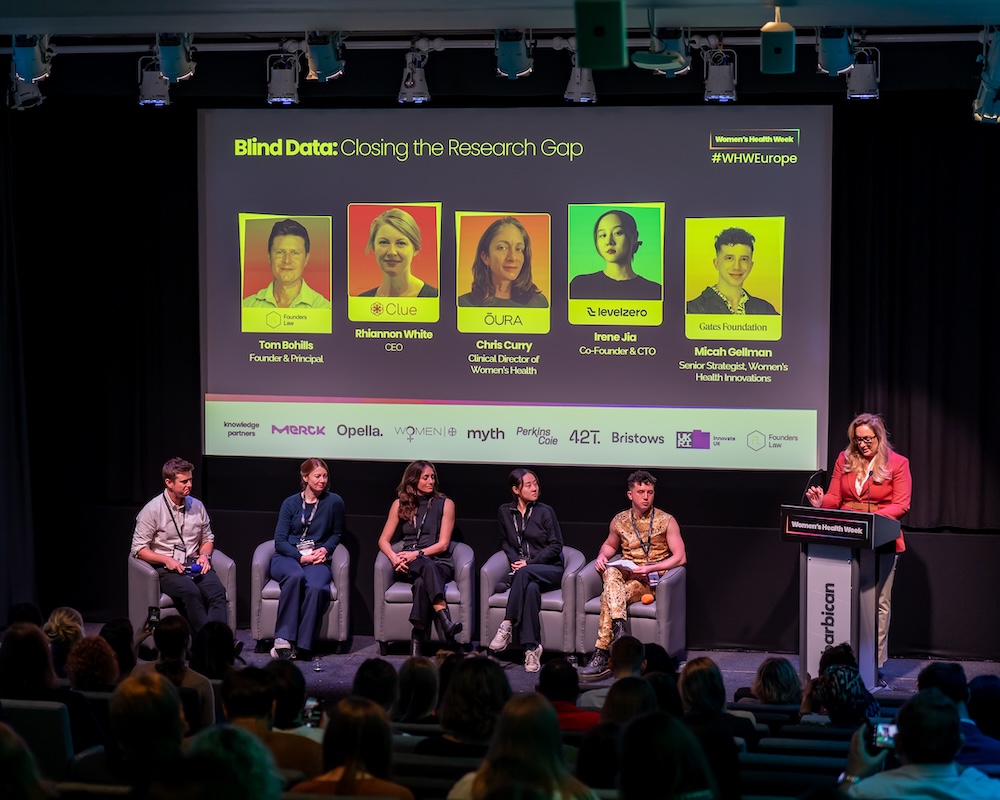
After two years of uniting the global women’s health ecosystem to drive impact and investment, Women’s Health Week USA has announced the central theme for its 2026 summit: Women’s Health 2.0 — The Era of Scale.
Returning to New York on May 13–14, 2026, the event signals a pivotal moment for the sector. Innovators are no longer just building; they’re scaling.
Investors are increasing activity. Corporates are moving from exploration to strategic commitment. And across the industry, momentum is accelerating at a pace not seen before.
A sector entering its scale phase
This year’s theme reflects a maturing market, one where clinical validation, commercial models, reimbursement pathways and distribution strategies are now centre-stage.
Women’s Health Week USA 2026 will spotlight the organisations translating innovation into real-world adoption.
From the key program themes have just been released this week, attendees can expect:
- A sharper focus on commercialisation and growth, including reimbursement, regulatory clarity and distribution models.
- Deeper investor engagement, with expanded opportunities for targeted 1:1 meetings.
- Two expanded Innovation Showcases, highlighting the next generation of breakthrough founders driving impact at scale.
- A more global attendee base, bringing together more than 600 leaders spanning innovators, investors, corporates, and policy makers.
- New session formats designed to maximise meaningful connection and deal-making.
These developments reflect a broader shift across femtech and women’s health: the move from early innovation to adoption, acceleration and scale.
Shaping the future of women’s health
As one of the sector’s largest global gatherings, Women’s Health Week USA continues its mission to facilitate strategic partnerships that deliver both commercial growth and improved health outcomes for women worldwide.
Over the coming weeks, the organisation will release early speaker announcements, agenda themes and opportunities for innovators, investors and corporates to take part in this year’s programme.
Don’t miss out – register your interest here to receive all the updates as they’re released.
News
AI for women’s health: A new era of enablement

By Ema: AI for women’s health and wellness
We launched the AI for Women’s Health Pilot to give women innovators the freedom to build what the next decade of healthcare will look like.
By reducing cost barriers, we invited companies to experiment boldly – to test, deploy, and imagine how intelligent systems could repair the gaps traditionally seen in women’s health.
The goal was to prove what’s possible when AI becomes a connector that helps teams build tools that make care more accessible, more human, and more aligned with how women actually live and heal.
What the Pilot Applications Told Us about What Companies Want to Build
In four weeks, hundreds of companies applied to the pilots.
Many were early-stage, but already in motion, referencing beta launches, active users, and technical roadmaps built around real care gaps.
Across the board, innovators were trying to fix moments in care that are historically underserved, emotionally complex, and structurally misaligned: postpartum rage, painful sex, caregiver burnout, benefits confusion, and perimenopausal fatigue.
-
- 90 per cent of applicants were pre-seed to Series A, with the largest segment being Seed stage. Of those, over two-thirds had a working product and were seeking an AI layer that could evolve with them. Applicant companies were based in North America, Europe, and Asia.
- The top two categories were mental health and reproductive care innovation, with menopause and sexual health being the runner ups (more than 10 per cent of applicants). Postpartum trauma, anxiety, fertility tracking, and caregiver overload were common threads throughout applications, too.
- 55 per cent were actively building with AI already, and another 32 per cent were exploring its use for the first time. Most weren’t trying to invent new models. They were looking to integrate something smart, safe, and specific: AI not as the product, but as the thing that makes their products (i.e: mobile app) work better.
- The most requested use case was care navigation. Nearly every use case came back to the same task: help users (patients, customers or clinicians) get to the next step faster, with less overwhelm. Smart routing, emotionally intelligent intake, and context-aware flows dominated the design conversations.
- The language said even more than the numbers. Across applications, we saw the same phrases show up again and again:
“Care gaps.”
“Overwhelmed.”
“Too many tools, not enough guidance.”
“I built this after my own experience with ____.”
Five Key Takeaways We Learned from Our AI for Women’s Health Pilot
One fact was obvious: AI is not a feature, it’s the invisible layer that makes products usable.
Across every pilot, AI served as the connective tissue between complexity and clarity, transforming static systems into adaptive, learning ones.
- AI succeeds where “old school” machine learning used to fail. It thrives in moments that can’t be hard-coded interpreting context, emotion, and ambiguity in real time.
- The biggest breakthroughs happen in broken care systems. Each pilot solved a gap in care (from postpartum grief to menopause confusion) showing that AI’s greatest value lies in repairing what traditional systems overlook.
- Navigation beats prediction. The most successful use cases weren’t about diagnosing problems, but guiding people to the next right step like triage, education, or referral. Helping women understand what they “might” need can change their lives.
- Emotion is data. AI that detects hesitation, urgency, or grief can meet people where they are with empathy. This creates trust and connection that static technology can’t deliver.
Meet the Pilot Winners!
The five companies selected for Ema’s inaugural pilot represent the next wave of leadership in women’s health.
Each one is solving for a care moment that most platforms still overlook and doing it faster, smarter, and more emotionally attuned than many of the biggest players in the market.
These companies didn’t just apply to casually explore AI, they understand where the system is broken, and have an innovation to fix it.
A trauma-informed mental health platform for new moms, partners, and families. Mamaya is using AI to power emotionally intelligent triage, helping users identify what they’re feeling and route to the right level of support quickly.
“So often, people know something feels off but don’t have the words or tools to explain it,” said Amy Green, founder of Mamaya. “That’s where Ema comes in, giving language and direction to the emotional fog of pregnancy, postpartum, or just trying to find care.”
A digital companion for pregnancy and postpartum. Flourish is building escalation pathways that adapt in real time, using AI to interpret symptom severity and emotional tone, then structure the next step.
“This technology will help us guide users to the support they need without overwhelming them with information, forms, or options they’re not ready for,” said Melissa Bowley, founder of Flourish.
A platform reinventing how employees access workplace wellness, benefits, and care policies. Work& is using AI to make topics like lactation, fertility, or medical leave easier to navigate, delivering the right answer, in the right tone, at the right time.
A first-of-its-kind navigation tool for people experiencing sexual pain and pelvic floor dysfunction. Pelvic People is using AI to help users describe their symptoms, understand what’s happening, and access trauma-informed care, all in language that feels safe, private, and clear.
A postpartum recovery brand combining physical care kits with emotionally intelligent support. Coddle is integrating AI to guide new moms through healing with tailored, real-time education that meets them where they are physically and emotionally.
Ema is the first AI built specifically to make women healthier and happier.
Designed by women, for women, Ema delivers trusted, evidence-based support across everything from menstrual health to mental well-being.
To learn more about Ema, email us at letsconnect@emaapp.co.
Stay tuned for individual announcements on all Pilot companies as their AI rolls out into the world!
-

 Hormonal health4 weeks ago
Hormonal health4 weeks agoDozens of women report suffering painful burns after using Always sanitary towels
-
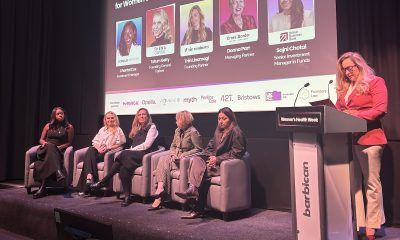
 Events4 weeks ago
Events4 weeks agoCutting through the noise in femtech – key takeaways from Women’s Health Week 2025
-
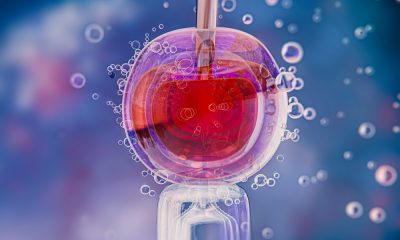
 News3 weeks ago
News3 weeks agoAI embryo selection tool wins European approval
-

 News1 week ago
News1 week agoOpinion: Not ‘just stress’ – How hormonal changes affect women’s brain function
-
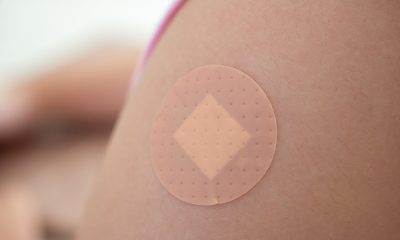
 News3 weeks ago
News3 weeks agoTestosterone patch shows promise for menopausal women
-

 Features3 weeks ago
Features3 weeks agoFrom SEO to GEO: How women’s health brands can get found in the age of AI
-

 News2 weeks ago
News2 weeks agoTop 7 drug-free solutions for managing PMS and PMDD in in 2025
-

 News3 weeks ago
News3 weeks agoFDA approves new menopause drug to treat hot flashes and night sweats















